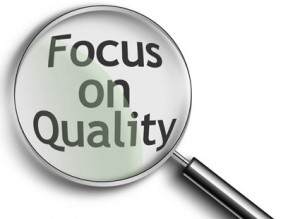Feedback Is Your Friend, Part 1
 Managing a group of strong-minded individuals can be a daunting task, especially when your team’s numbers start to grow, or if your team is remote. Quality assurance, for Project Managers, is an extremely important part of maintaining a well-functioning team, and increasing productivity without sacrificing quality. However, as a project manager at Metaverse Mod Squad, assessing the effectiveness and quality of my team (as a whole, and individually) is only the first step. The feedback stage is where the learning, growth, and improvement begins!
Managing a group of strong-minded individuals can be a daunting task, especially when your team’s numbers start to grow, or if your team is remote. Quality assurance, for Project Managers, is an extremely important part of maintaining a well-functioning team, and increasing productivity without sacrificing quality. However, as a project manager at Metaverse Mod Squad, assessing the effectiveness and quality of my team (as a whole, and individually) is only the first step. The feedback stage is where the learning, growth, and improvement begins!
Approach to Feedback
One of my core responsibilities is to constantly review work and send notes or feedback to my mods* regarding tickets, or escalated tickets (sent to me for review from other team members). While peer feedback and/or correction is not always bad, we cannot ensure the correct response, tone, or the reception, and I want my team to be working effectively as a unit. Feedback related to growth, process tweaks, or related to minor errors, etc, should come from an authority within the project in a friendly but direct manner. If the reports or work done by the staff member shows repeat infractions, dire misunderstandings, or practices not in line with the project or the service discipline, then a harder, more straightforward conversation needs to happen, beyond mere feedback. These issues tend to surface during routine QA (Quality Assurance) checks that I do on each member of my team.
Quality Assurance Vs. Feedback
 What is the difference between QA and feedback? First, let’s take a look at the idea of quality assurance. Quality assurance (as a practice) is the strict review of actions (such as customer support tasks, or moderation actions) through a step-by-step process by a manager which are routinely completed and tracked to ensure that quality and ongoing expectations are met. Think of it as a really thorough, highly detailed, tracked double-checking process.
What is the difference between QA and feedback? First, let’s take a look at the idea of quality assurance. Quality assurance (as a practice) is the strict review of actions (such as customer support tasks, or moderation actions) through a step-by-step process by a manager which are routinely completed and tracked to ensure that quality and ongoing expectations are met. Think of it as a really thorough, highly detailed, tracked double-checking process.
Most Metaverse Mod Squad managers have a ranking system for their QA checks, where they assign a score to each ticket, call, moderation step, etc. They track and store these scores and notes for review with the team member. As mentioned, the majority of feedback for staff comes from QA checks, and although I may not review the mod’s score in that moment, I will give feedback to help improve the process prior to our QA review meeting.
Feedback can be as simple as as, “Hey, I need you to stop [doing action].” It goes a really long way when a mod realizes he or she has done something incorrectly (by accident, of course), and it was caught. Like QA checks and tracking, feedback can also alert managers to those they may need to keep an eye on. In some cases, feedback can even let a manager know there are questions or confusion with workflow, or updates needed to process, since providing feedback opens a line of communication.
Hands-On Approach
 What is a hands-on approach to feedback? It’s taking the time with a staff member to really focus on ensuring the feedback is heard, processed, explained, and understood. When the feedback contains imperative information, is in regards to a complicated step or project, or involves additional training or context, I take the time to go through the feedback; I call it my “Show Me” approach. For example, I will provide the direct link to the ticket or item (in question) and ask the mod to send me his or her workflow walk me through the process so I can find the point where he or she took a wrong turn. I want to hear what the mod has to say so I can make sure our correct workflow is as concise and uncomplicated as it can be; and if I can change a workflow to better suit the team and success, I’ll do it.
What is a hands-on approach to feedback? It’s taking the time with a staff member to really focus on ensuring the feedback is heard, processed, explained, and understood. When the feedback contains imperative information, is in regards to a complicated step or project, or involves additional training or context, I take the time to go through the feedback; I call it my “Show Me” approach. For example, I will provide the direct link to the ticket or item (in question) and ask the mod to send me his or her workflow walk me through the process so I can find the point where he or she took a wrong turn. I want to hear what the mod has to say so I can make sure our correct workflow is as concise and uncomplicated as it can be; and if I can change a workflow to better suit the team and success, I’ll do it.
Shadowing is a sister-example to the “Show Me” approach, and it may require my remote mod to share his or her screen (usually via Skype) so I can actually watch and see the steps the mod is taking. This is the best approach when I feel there is an inconsistency in the logic from the mod (from time to time, a mod might be misreading or using the incorrect lingo, or incorrectly assessing a visual). This approach is often used (and highly recommended) during training sessions.
Feedback Is Your Friend, Part 2 will be shared later this week – so stay tuned!
Cherise Verrett
Project Manager
*Please note that we consider all of our awesome staff, from agents to moderators, QA staff, social media strategists, etc, “mods.”
This entry was posted in Best Practices, Customer Support, Digital Engagement and tagged Customer Service, customer support, feedback, management, manager, QA, quality assurance, review, services. Bookmark the permalink.SUBSCRIBE TO OUR BLOG
Get a weekly roundup from the world of ModSquad.
SUBSCRIBE TO OUR BLOG
Get a weekly roundup from the world of ModSquad.